Review: Richard Findley Demo – Sunday 16th March, 2025

Richard’s demonstration comprised of a masterclass on the use of the skew chisel and a thread chased face grain box.
Skew Chisel
Richard’s demonstration of the skew chisel complemented his recent Skill Builder series in issues 395 – 407 of the Woodturning magazine and, in particular, the techniques shown in issues 395-397. If you don’t subscribe to the magazine then ask other club members to borrow a copy.
Richard demonstrated two challenges:
Skew Challenge 1
To make matching convex and concave turnings as shown below.

This challenge can be done first with straight profiles, and then with curved profiles.


Both challenges are started by rounding a spindle blank and creating tenons, say 20mm wide and 30mm in diameter, at each end. Use a pencil to mark the centre, and left and right starting points 10mm on either side of the centre. Turn from each starting point towards the tenon.


To create the matching piece, mark starting points 20mm from each end. Then mark the centre and finishing points 10mm on either side of the centre. Then turn from each starting point towards the nearest end point.
Skew Challenge 2
The second challenge was to turn an egg using only a skew chisel. This is described in Woodturning magazine issue 407.
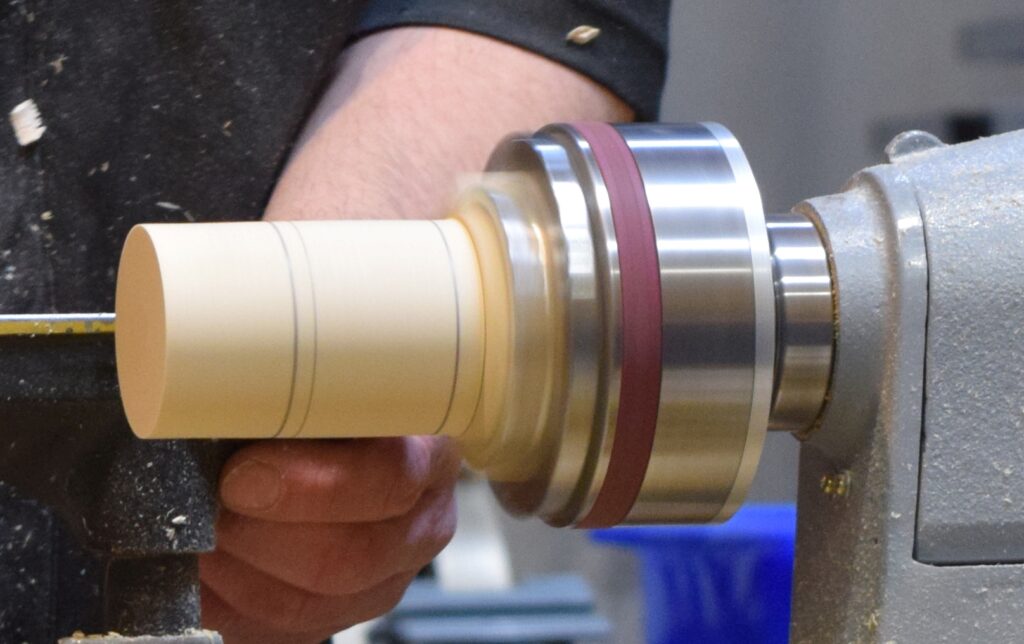


Box with a Threaded Lid
Threaded boxes are generally turned from end grain blanks but Richard used a small bowl blank. When using end grain blanks a dense wood such as box or ebony is required but for cross grain other woods can be used.
The technique shown was very similar to the demonstration of a potpourri by John Boyne-Aitken in our July 2024 meeting. However, rather than using thread chasers specifically designed for wood, Richard used metalwork chasers which can be found on ebay fairly cheaply. Richard used a 10tpi chaser, in contrast to wood chasers which are often 16-20tpi.
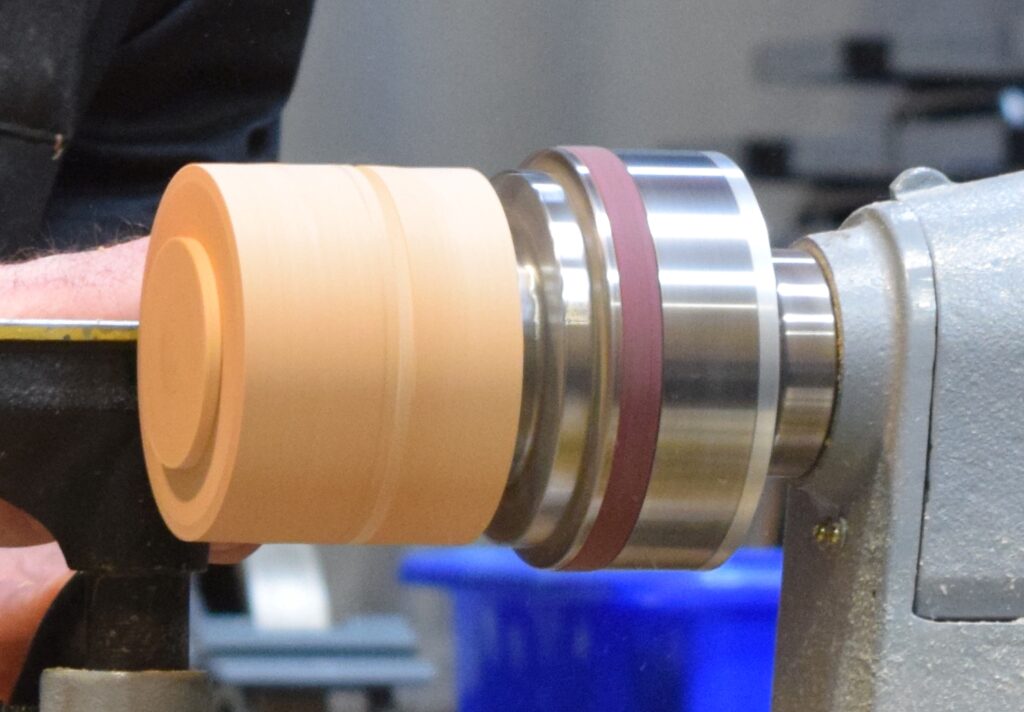
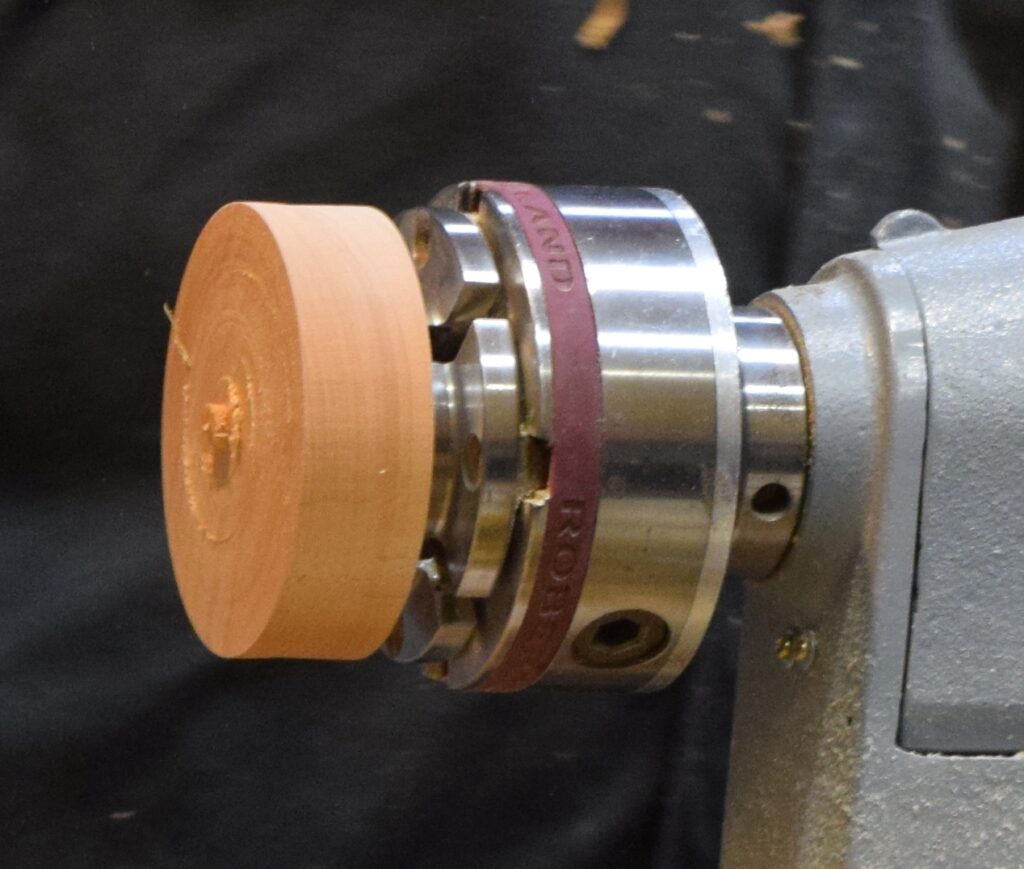
Round the blank. Create a tenon. Hold in a chuck. Create a second tenon. Part off the base leaving the lid in the chuck.
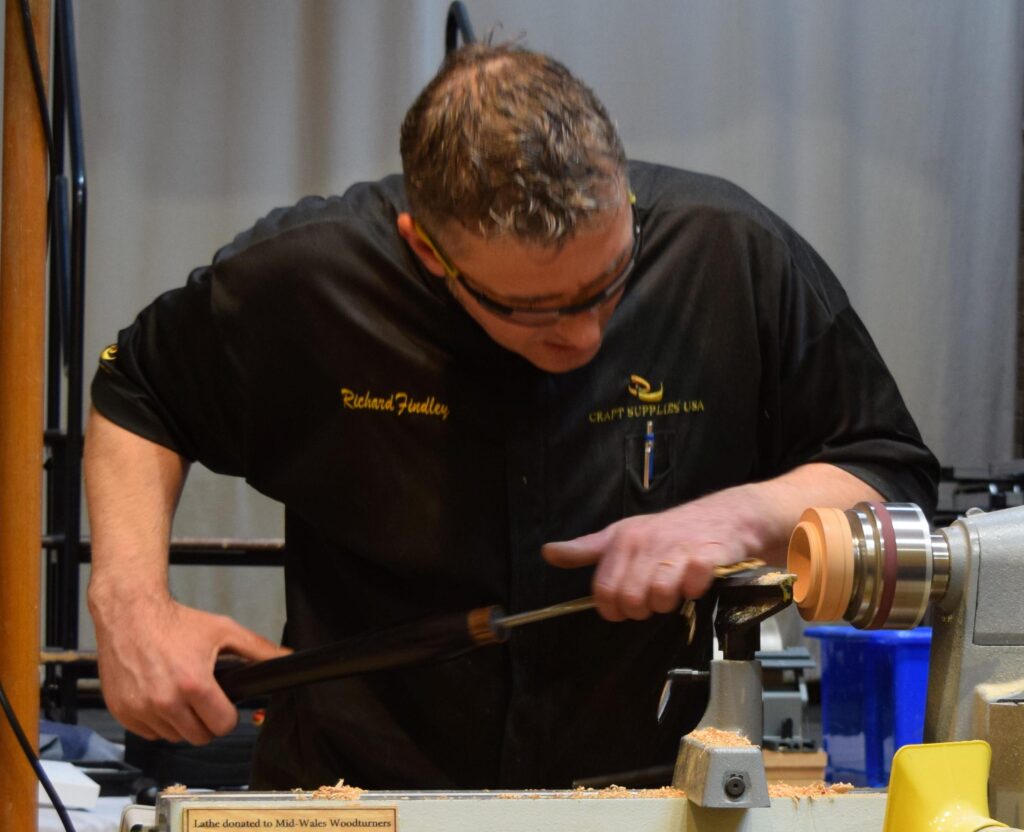
Hollow out using a bowl gouge. Straighten the inside edge using a scraper. Put a chamfer on the inside edge. Add sanding sealer to strengthen the fibres. Cut the internal threads using a low speed (380rpm). Use a ruler to check that the threads are parallel: press the ruler against threads and look down on the ruler to see if it is parallel to the lathe bed. Adjust the angle if necessary.
Finish and sand the inside. Reduce the number of threads if necessary and make sure the lid is flat by testing with a ruler.
Mount the base. (Sorry I didn’t get photos of this stage.) Use callipers to measure the diameter of the inside threads of the lid. Add sanding sealer to the outside of the base to strengthen the fibres. Chamfer the edge. Cut the external threads. Test fit the base with the lid. If the threads of the base are too big then use a skew to the scrape off the tops of the threads and re-cut. Finally reduce the number of threads so that the lid closes fully and the grain aligns. The base can be hollowed and finished.

To give the lid its final shape, screw it onto the base. Use a bead former to create a bead feature on the side of the lid. Remove waste from the front. Continue the bead on the front face. Use a gouge to round the central part of the lid.

The outer box is shaped with a spindle gouge to create a hollow in the box sides. Note that cross grain boxes should be turned uphill to reduce tear out. However, initially we turn downhill to get started, and then refine by turning uphill using a shearing cut. Remove the lid and cut a 1mm recess in the outer edge of the base so that any movement in the box is less noticeable at the join of the lid and base.

Cut a thread in a waste block to hold the base in order to remove the tenon.
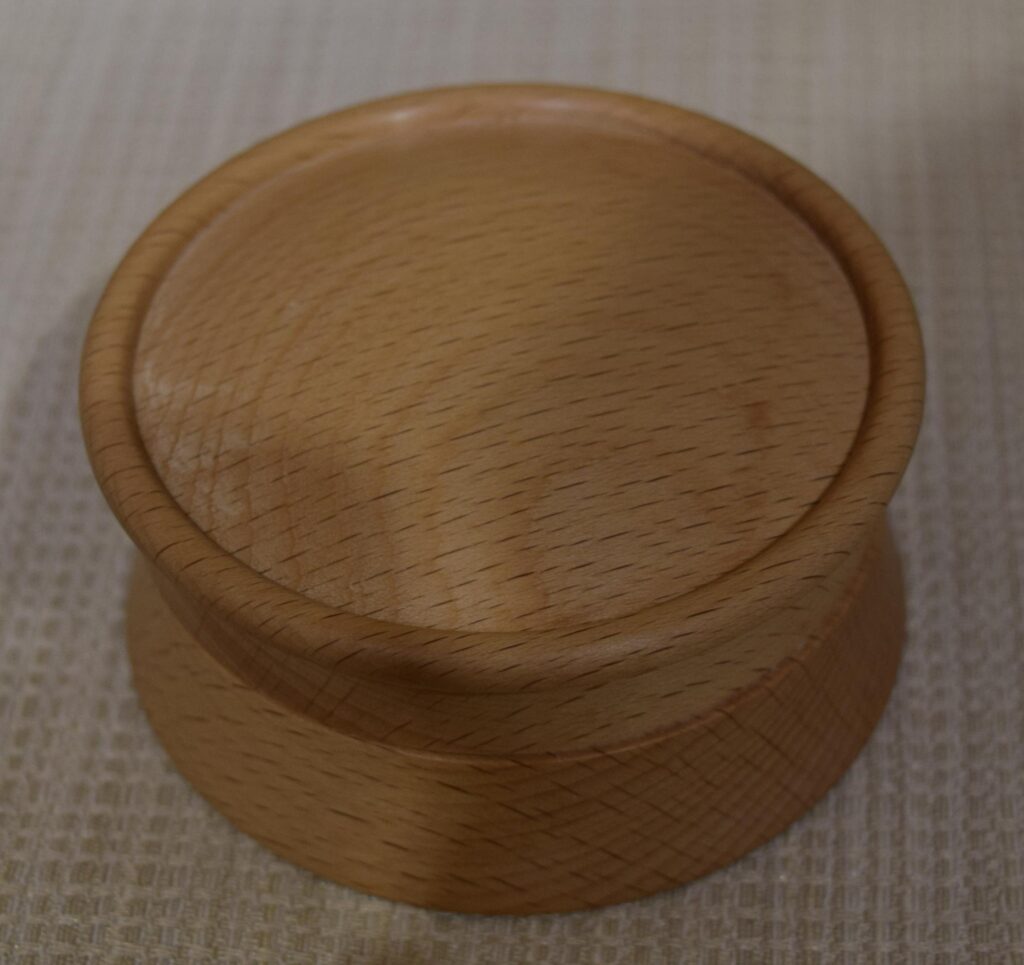

Note: Cross grain boxes have a greater tendency to deform than end grain boxes. It would be advisable to leave the box for a few days after hollowing to allow for movement. The lid and base can then be remounted and rounded before cutting the threads. Obviously this was not possible in a demonstration.
